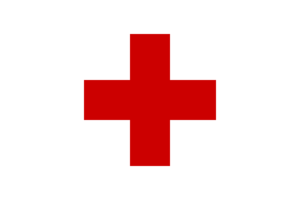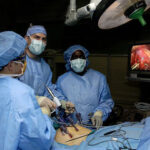Definition of an Avulsion Injury
Most people who are not health care providers aren’t able to answer the question, “What is an avulsion?” However, considering the machinery and power tools in use today, it’s not a bad idea to know what avulsions are and how to respond if faced with one. An avulsion is the tearing away or the complete tearing off of a piece or flap of skin or soft tissue and is, in my opinion, one of the most grotesque of all injuries, including an evisceration. Soft tissues of the body are the skin, muscles, membranes, nerves, glands, fatty and fibrous tissues, and blood vessels. An evisceration is the protrusion of an internal organ through an abdominal wound. The term “avulsion” is also used to refer to a tooth or eye that has been pulled from its socket. Photographs of such injuries can be very disturbing; however, they serve to drive home the realization of just how gruesome an avulsion injury can be. I remember the vivid photographs of patients suffering from some of the worst of these injuries being disturbing to myself and classmates during our emergency medical technician (EMT) training. Some of us wondered how well we would handle our first real-life experience with treating an avulsion injury.
The Health Risks Associated With An Avulsion Injury
When the body’s soft tissue are avulsed, they are cut off from their much needed supply of oxygen and can quickly suffer necrosis (the death of body tissue). Depending on the severity of the avulsion, the victim might suffer life-threatening hemorrhage (bleeding) which can lead to hypoperfusion, commonly known as shock. Although many people don’t realize it, the skin is actually an organ, a vital organ without which no person can live. When it is burned, torn or ripped away, the body is left open to contaminants from the environment resulting in infection.
Treating an Avulsion
Large and bulky pressure dressings, preferably sterile, but at least clean, should be applied to the area and every effort to preserve any and all avulsed parts should be made so they can be transported to the medical facility that will be attending to the patient. Hemorrhage control is vital to help prevent the person from suffering shock. It’s a good idea to learn the simple, but effective techniques for controlling bleeding before having to face an emergency unprepared. Preserving avulsed parts is extremely important because there might be the possibility of the parts being surgically restored or, if this isn’t possible, at least the parts still might be able to serve for grafting skin.
The surface of the injury should be very gently cleansed; however, chances of causing further injury in an attempt to clean the surface should never be taken. One of the hardest things a layperson might need to do to help someone suffering from an avulsion injury is to make a very gentle attempt to fold the torn and detached skin back to its normal position. While waiting for the arrival of EMTs or while on the way to the hospital, if emergency medical services (EMS) isn’t called, it’s important for the person attempting to help to remain as calm as possible in the face of a hideous avulsion and to try to keep the patient as calm as possible.
____________________________
source:
My EMT training and experience (current NREMT certification and current state license)







